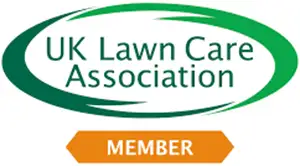Leatherjacket
Symptoms
How to tell if leatherjackets are a problem in your garden;
Lawns develop patches where the grass turns yellowish brown and often dies. This can be distinguished from similar effects caused by lawn diseases or adverse growing conditions by lifting the affected turf and finding leatherjackets in the surface layers of the soil
Leatherjackets may also be revealed in lawns by soaking it with water and covering it with material impervious to light, such as sacking or black polythene. The following day large numbers of grubs should be found on the surface under the cover
Crows, magpies, rooks and starlings will search for leatherjackets in turf. These birds leave small round holes in the turf where they have inserted their beaks. They will also search for chafer grubs in a similar manner
Leatherjackets have elongate tubular bodies, up to 30mm long, and are greyish brown. They have no legs or obvious head
Control
Non-chemical control
A biological control is available for controlling leatherjackets in lawns, This is a pathogenic nematode, Steinernema feltiae, which is watered into the turf or soil. The nematodes enter the bodies of leatherjackets and infect them with a bacterial disease. To be effective, the nematode requires soil that is well drained but moist and with a minimum temperature of 12°C (54°F). The turf around the edge of affected areas should be targeted to deal with larvae spreading out from infestation “hot spots” in the lawn. However, by the time areas of infestation become apparent, the soil may be too cold for nematodes to be effective.
Chemical control
There are currently no chemical controls for leatherjackets on lawns.
Dogs
Animals can have detrimental effects on turf. Dogs will trample the area if confined to a small space, and they must void their waste at some time. Apart from the smell and health implications it doesn’t look very nice either.
If you have dogs we would be grateful if you could ensure your lawn is clear of any dog mess before we call. Bitches also cause patches of dead grass where they urinate, however if at all possible you can immediately dilute the area with a bucket of water this will greatly reduce the harmful effect dog urine has on grass.
Moles
Moles are most unwelcome and can destroy a lawn, they are attracted by and feed on mostly earthworms but will also eat insects, larvae etc. Moles can be controlled by trapping or fumigating. If you have a problem with moles we recommend you consult with a licensed pest control expert.
Rabbits
Other pets such as rabbits and their wild cousins will scrape little holes.






